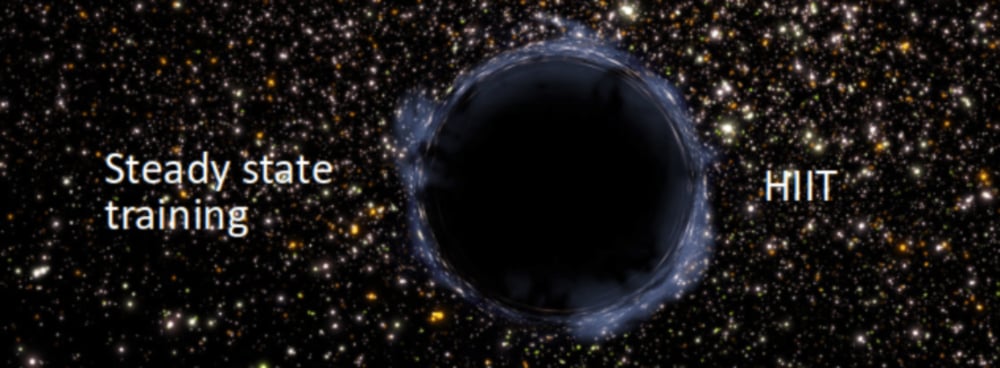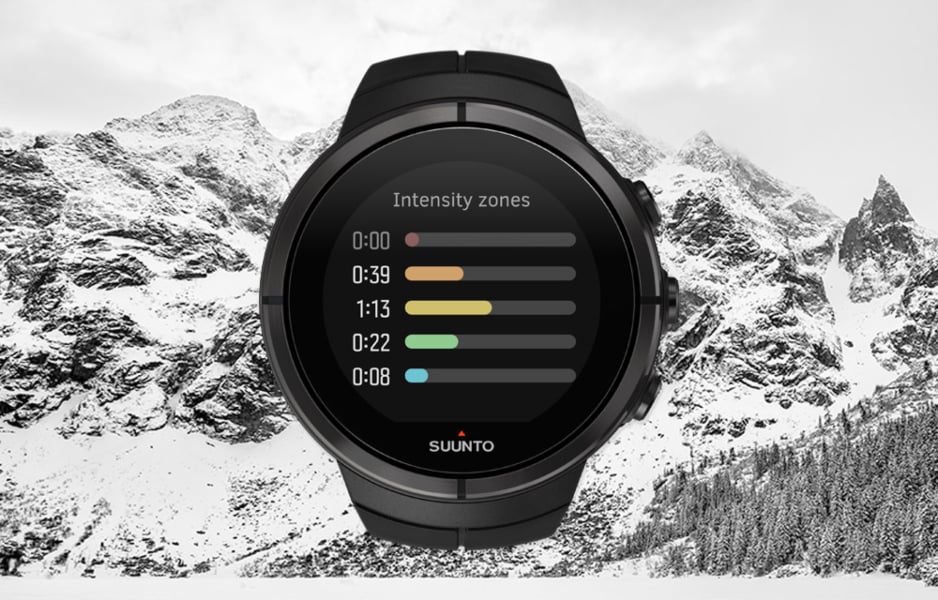Many of us know this scenario: your training plan has you scheduled for an easy recovery run that mysteriously becomes faster and faster. Maybe it’s because you are motivated and feel good or because you don’t want to be overtaken by that runner just behind you. Sounds innocent enough, right? Thing is, running just a bit faster than you are supposed to can destroy your training program without you or your trainer even realizing it. You were just sucked into the training black hole.

For serious training blocks, don't fall into the middle of the black hole.
What is the black hole?
Stephen Seiler, an American sport scientist at the University of Adger in Kristianstad, Norway, researched this phenomenon in 2007 and gave it the name, “training in the black hole”. The black hole consists of an alluring, gratifying training intensity and sucks your training into it. Your easy runs become a bit faster and the hurtful high intensity intervals become a bit less intense. Instead you drift down the middle into the gaping maul of the black hole. You don’t train one or the other intensity you are supposed to. Training on recovery days becomes just a bit too intense to give your best on high intensity training days.
For non professionals training in the black hole might be somewhat ok. You go for a 30-60 minute run and you run a bit faster than you should. Until your next training two days might pass which is enough time to fully recover. The intensity will be high enough for adaptations. For serious training, however, it’s essential to train in low and high intensity zones and not in the black hole.
The black hole in elite sports
The reason for Seiler researching the phenomenon of the black hole arose out of an experience with Olaf Tufte, an elite Norwegian rower. After winning third place at the world championships in 2002 Olaf had mediocre results in races the year after. The cause of the disappointing results was a mystery, especially given his training schedule did not change. Eventually he and his trainers discovered the cause: the cool new boat he got after the championships in 2002 gave him the extra motivation to go faster than normal on his recovery days. This additional intensity was enough to sabotage his regeneration and his results. He’s been pulled into the black hole.
Avoiding the back hole: know your intensity
There is a simple way to avoid being pulled into the black hole; don’t train according to feeling and whim, but have a proper training plan and be mindful of which training zone you should be in on each workout and stay in it. To be precise about these training zones and the levels of intensity, you need to know your heart rate, pace or power zones. Click here to read more about understanding your training zones. And handily, Suunto watches display in real-time which training zone you are in on the watch face. They also show the duration you spent in each zone and allow you to set an intensity target for each workout.
PerfectPace is the endurance training platform for triathletes that takes you a step ahead. For a steady performance gain you had to know a lot about training methodology to plan your training sessions. Especially in a sport like triathlon where three sports need to be planned correctly. This is where PerfectPace steps in. It offers not only unique statistics that up to now were only available in expensive desktop applications but it also helps to create a plan that boosts your performance with the help of artificial intelligence, big data and the latest advances in training science. PerfectPace considers not only your training activities but also rest days, tapering, even injury and your personal strengths and weaknesses.
Lead images:
© Graeme Murray/Red Bull Content Pool
Read more articles
Know your resting and max heart rates
10 reasons to enjoy open water swimming with Suunto
The benefits of training to music and making your best playlist
